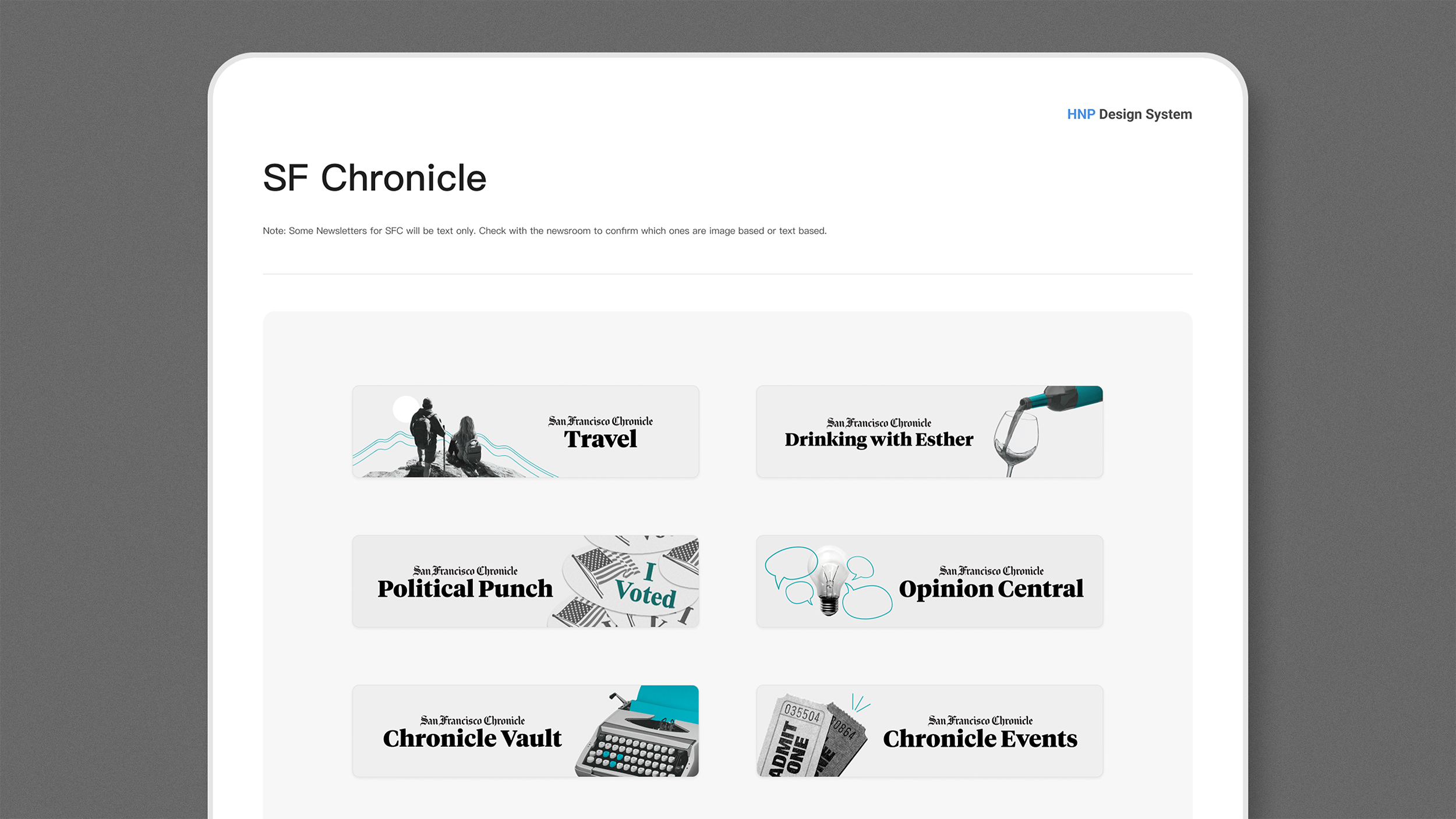Case Study / Newsletters
Hearst Newspapers / 12 Months / Product Designer, Creative Director, Researcher, Designer
Objective: Improve the Newsletter Experience at Hearst Newspapers
Challenge
Hearst Newspapers discovered that users who subscribed to newsletters were more likely to become paying customers lin the future as they were gradually introduced to the award winning local journalism, became more engaged and ultimately find great value in the subscription offerings of each publication. From this, we identified the the current Newsletter experience was significantly lacking- suffering brand identity issues, a lack of structure, lack of process and inefficiency issues.
Potential Problems
With this project, we uncovered several issues that could be improved upon that allowed us to improve the newsletter experience, not only benefiting the user but the teams involved in the process as well. They were as follows:
Inefficient workflow - Having no Design System in place meant that people were starting from scratch every single time a new newsletter launched. Journalists were designing when they should be writing. Marketing teams were developing when they should be marketing.
Brand Issues - Using freelance designers meant that every newsletter looked different and wasn't reflective of the brand and therefore wasted opportunities to build brand equity.
Consistency issues - Newsletter promotion looked different on site, in the inbox, online, in promotions- further proof that a Design System was necessary to improve the overall experience.
KPI’s
Improve the overall Newsletter Experience.
Solution
The approach we took was similar to how I approach the majority of product design requests and a summary is as follows:
Discovery work - We did stakeholder interviews, unmoderated and moderated user interviews and a SWOT analysis to understand fully the job to be done. We identified that the newsrooms didn't need a bespoke newsletter every time, there were patterns to the content that they created so we understood that in order to improve this, we needed to create a Newsletter Design System that included relevant templates that the team could execute quickly and efficiently.
User Research - Understanding how the user interacted with newsletters was important to understand how this product implementation would work. This included unmoderated and moderated interviews to see how users signed up for newsletters, how they responded to the newsletters themselves, what worked and what didn't work in a general context. In this stage we uncovered that users felt that the emails were spam or un-modern. With this information, we further identified that we needed a robust design system that allowed for consistency and something that was easily executable that didn't rely on external agencies to execute.
Strategy- We identified core issues that was impacting execution of newsletters. There was no system in place for creating newsletters, no real structure in promoting newsletters, a lack of cohesion with brand, a lack of cohesion with the user experience.
Stakeholder Feedback- Soliciting feedback early and often allowed the stakeholder feel part of the experience, rather than excluded from the process all together.
Design- In this stage we developed the Information architecture, the task diagrams, wireframes and the design comps in Figma and then created robust documentation for proper hand off to the development team.




Execution
Working in tandem with the existing design system, we developed the newsletter design system so as to ensure the visual language being used would be carried across over to ALL digital assets.
We developed new components so unnecessary work was eliminated
Developed Brand Guidelines to help improve consistency across all newsletters
Developed a intake system to help facilitate asset create in accordance to brand guidelines
Updated signup pages and marketing materials to help improve the overall user experience
Results
Execution of newsletters went from 7 steps to 3, improving efficiency by 57%. In a real world context, launching a newsletter now only takes 8 days instead of the original 20 days previously. Newsletter sign up rates improved by 27%
